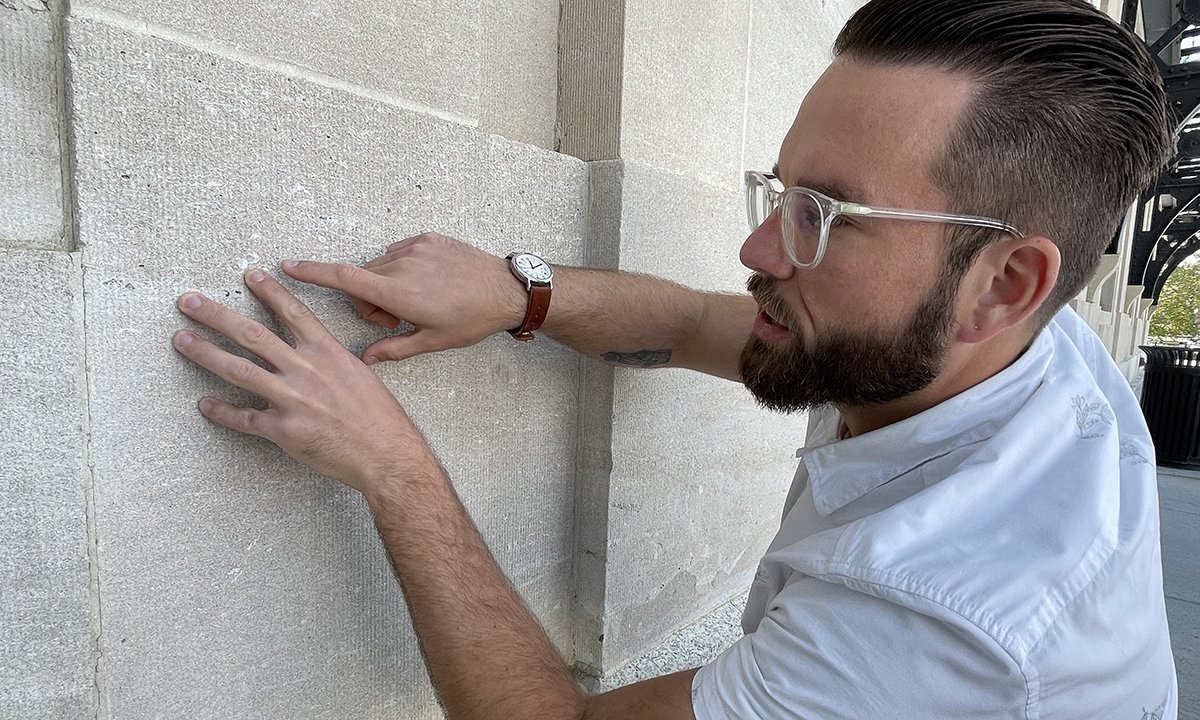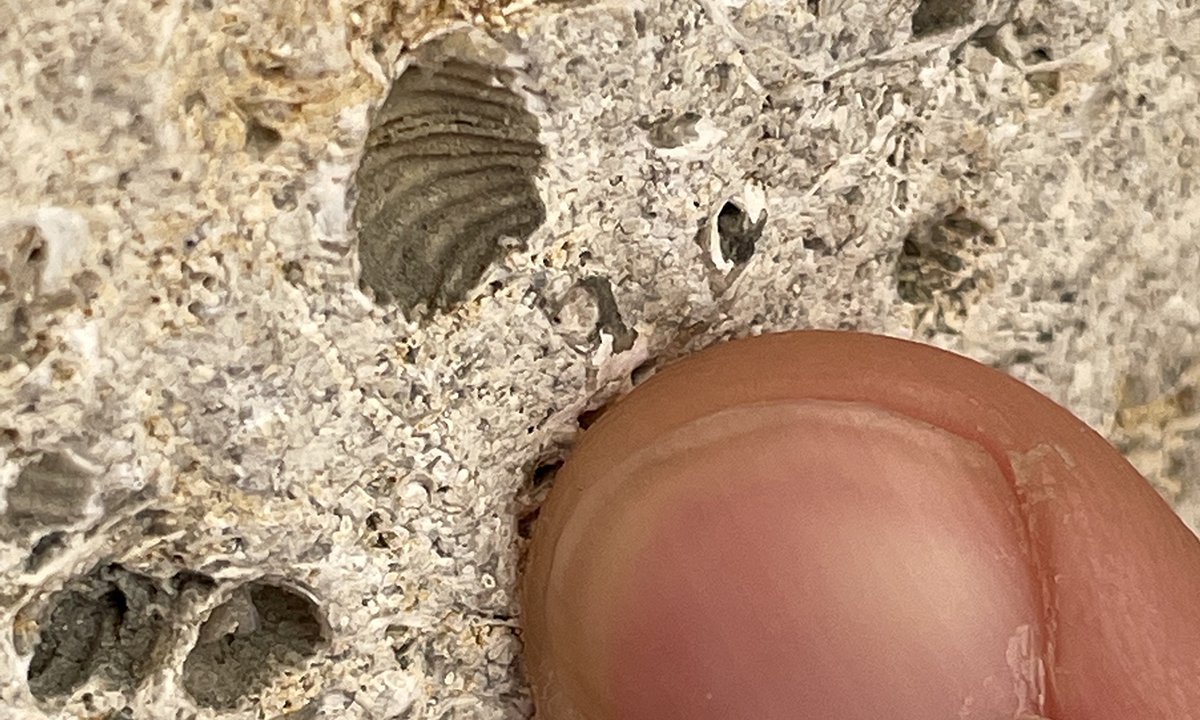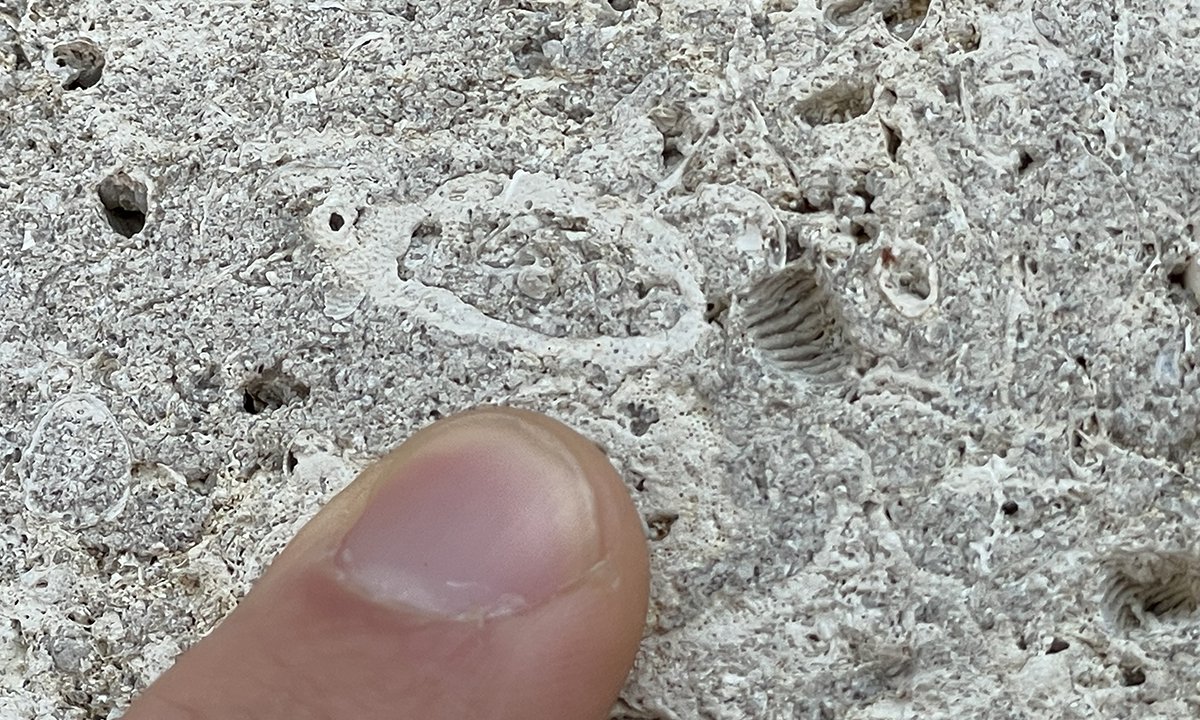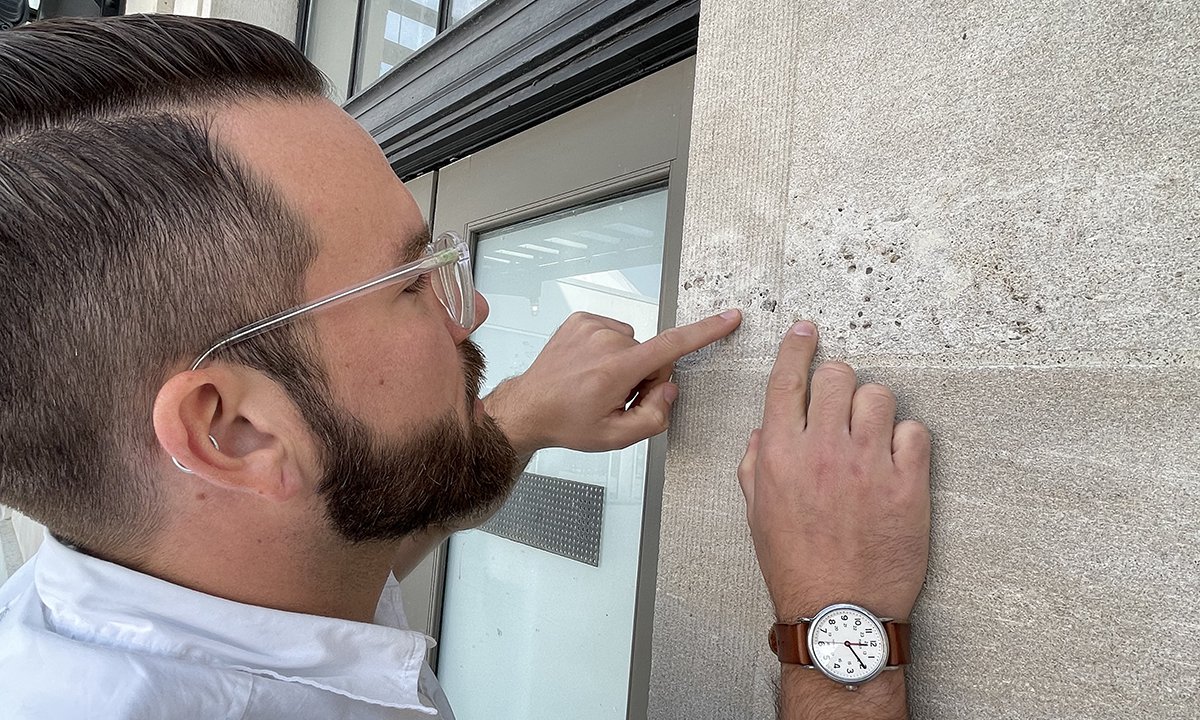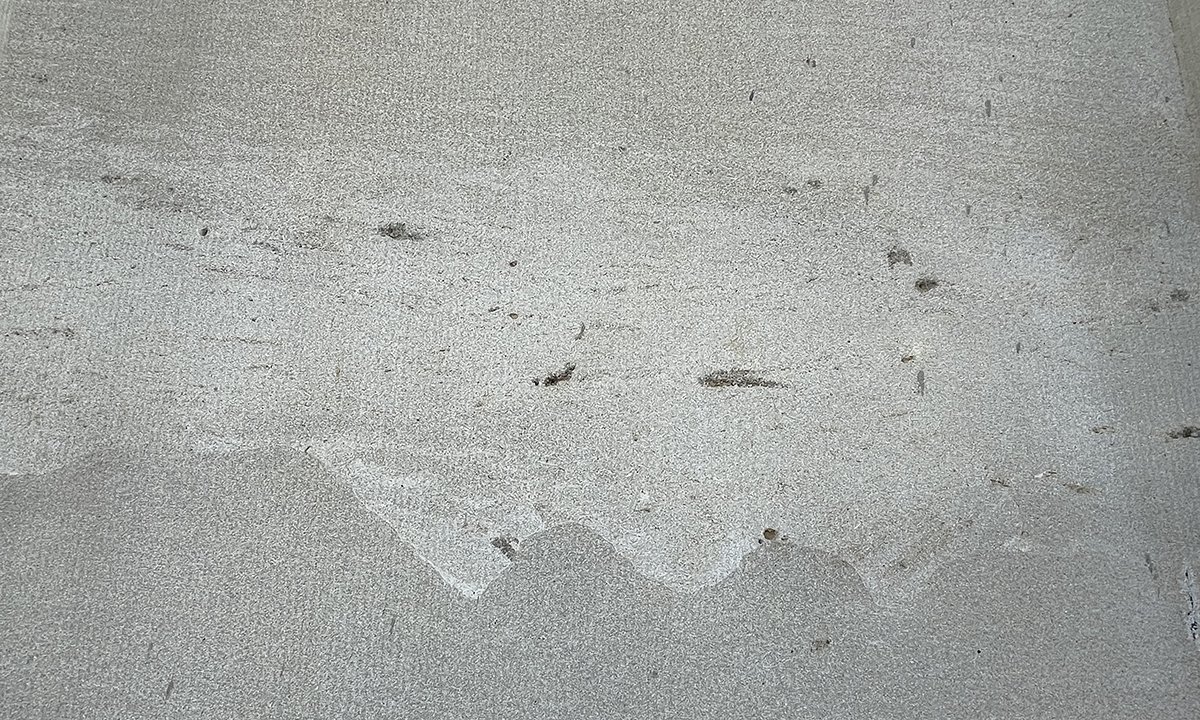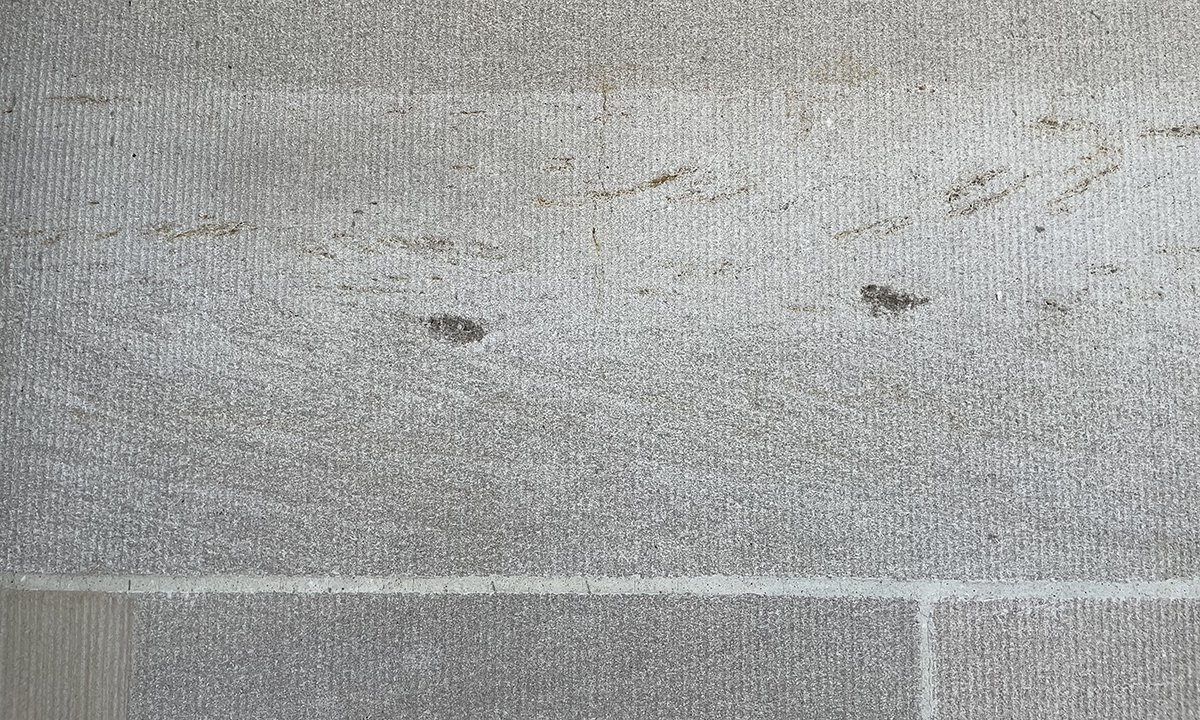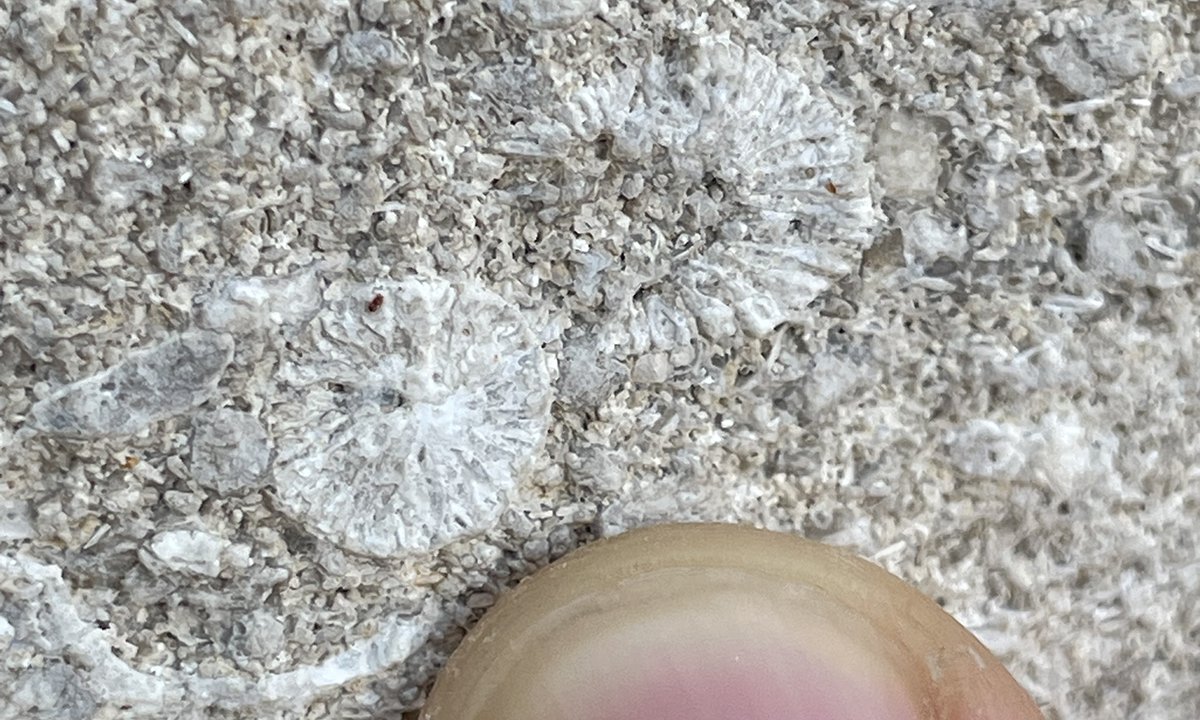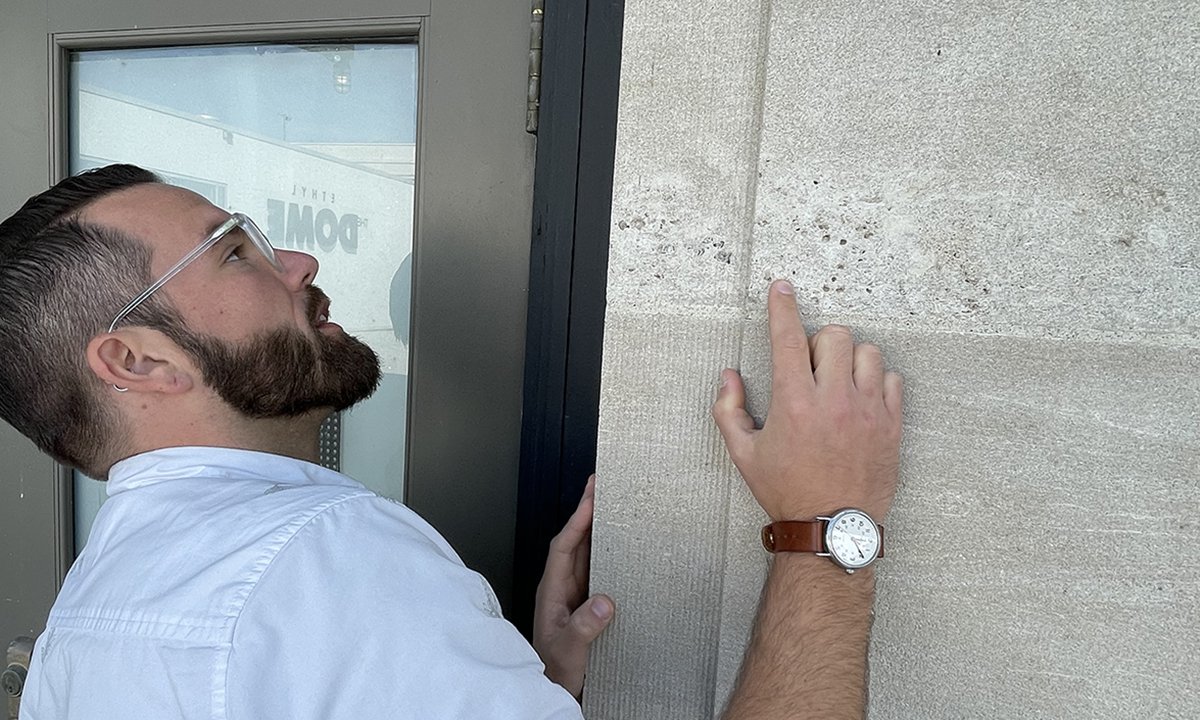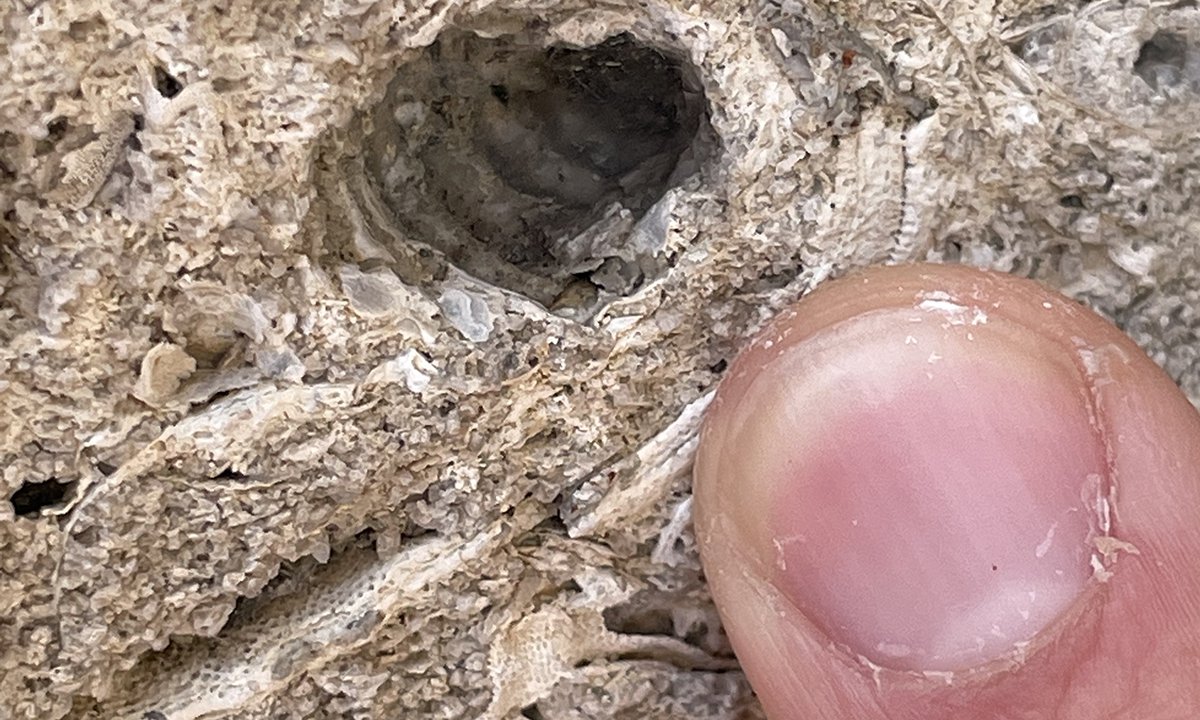Prehistoric Property: Fossil Hunting IN the Science Museum
Twinsies! Just like the Empire State Building, our building is 350 million years old. Well … sort of. While Broad Street Station’s construction was completed in 1919, the Indiana Limestone used to build the impressive structure is prehistoric.
So what is Dr. Hoffman doing as he scales the walls and peeks around corners? He’s searching for fossils, of course!
Perhaps you’ve never looked closely at our limestone façade, but you can see tiny fossils embedded into the walls. That’s right, the remnants and impressions from species that lived millions of years ago pepper the stone for all to see if you just look closely.
Indiana Limestone - also known as Salem Limestone - contains a wide variety of fossils, including snails, corals, brachiopods, bryozoans and crinoids. And it's not just critters you’ll notice: there are several examples of a geological feature called crossbedding.
Crossbeds formed from constant wave action in shallow ocean conditions. As coarse sand moved across the seafloor, the small fossils and fossil fragments formed grain-like patterns in the rock based on wave and current direction. They almost look like paint brush strokes or the structure of a sand dune. Which makes sense as the Science Museum’s home is certainly a work of art!
Here are 10 more fascinating facts about Indiana Limestone and Broad Street Station.
- The first Indiana Limestone quarry opened in 1827. By 1920, Indiana limestone represented 80% of the total US limestone industry.
- Today, nearly 2.7 million cubic feet of Indiana Limestone is quarried each year from nine quarries.
- Indiana Limestone is a freestone, meaning it has no preferential splitting direction. It’s a versatile building material as it can be planed, turned on a lathe, sawed and hand worked.
- Indiana Limestone is considered chemically pure, made almost exclusively (97%) from calcium carbonate.
- Its strength, combined with the generally uniform size of the micro-fossils and fossil fragments in Indiana Limestone, make it a desirable building material.
- Salem Formation is actually light-to-bluish-grey limestone. The light tan color displayed on the Science Museum’s building and other well-known structures around the world happens due to oxidation.
- In addition to the Empire State Building, the Science Museum is building material twins with the Pentagon, Lincoln Memorial, United States Holocaust Memorial and Museum and Grand Central Station.
- Broad Street Station was designed by New York architect John Russell Pope. Pope's body of work includes the National Gallery of Art, the National Archives and the Jefferson Memorial in Washington, D.C.
- Broad Street Station took almost exactly two years to build. The team broke ground in January of 1917, and the first train to roll out of the passenger rail station left at 1:07 p.m. January 6, 1919.
